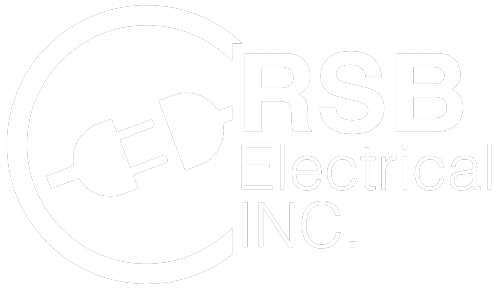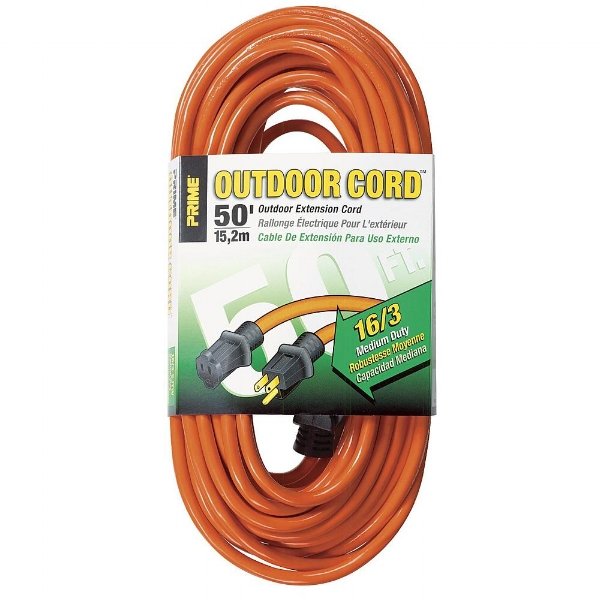Extension Cords--what You Should Know
An extension cord is used to connect an electrical cord to the outlet if the main cable falls short. Extension cords vary in length and type of outlet plug. They can be anywhere in length from two feet to as long as one hundred feet. It’s important to use the right cord size for the job you need. Connecting two extension cords together should be avoided because it creates a drop in amperage. An extension cord which is too long can create a tripping hazard.
Notice they call this cord a 'medium duty,' even though it's only 16 gauge? That's why using a cord which is a little heavier than you need is always a good idea.
The type of extension cord you need should coincide with the type of outlet you have. A three prong cord requires a three-prong outlet. Using a modifier, the three prong-to-two-prong adapters, should only be done if the grounding tab is attached to the center screw on the outlet. Since many people don’t do this, we strongly urge our customers not to use these.
We're asking all of our customers not to use these. Please.
On the packaging of the extension cord, there should be some numbers. These are the gauge of the wire and number of conductors (wires) in the cord. So, a number like ‘12 3’ means the cord has 12 gauge diameter wire and 3 wires. Here is the breakdown:
16 gauge=light duty
14 gauge=medium duty
12 gauge=heavy duty
10 gauge=very heavy duty
The longer the extension cord, the bigger the drop in amps. It’s important to use a cord which is a heavy enough gauge for the tool or appliance. It’s much better to use a heavier cord than one which is too light for the tool or appliance. A light cord will get hot. Heat means danger. You can calculate the correct wire size here.
If the extension cord you’re using isn’t new, take a moment to check for damage. This includes blackened or damaged prongs, exposed wires from cuts, abrasion or gnawing children or animals, the plug separating from the cord, etc. Never use damaged extension cords!
These excellent weather pods can be used if you have concerns about your connection.
In addition, here are some other safety practices:
Never run extension cords under rugs.
Always tape down cords if they cross a walkway or traffic area.
Don’t use an extension cord as a permanent electrical connection. Call us. Not kidding.
Don’t yank or pull an extension cord out of the wall socket by the cord.
If you ever feel a hot spot on your extension cord, it’s not heavy enough for the job.
Watch for a U.L. listing on all of your extension cords and appliances. If it isn’t U.L. listed, it hasn’t been tested for safety. Pass it by.
Keep your cords wrapped nicely when not in use. Kinks, twists, and other crazy bends can damage your cord.
In addition, there are some items you never want to plug into an extension cord. Irons, toasters, portable heaters, waffle makers, etc. Notice the commonality? All of these are heat appliances. Heat appliances draw much more power than non-heat appliances.
Cords which seem to be too short are made that way so people and pets won’t become tangled in them, so they aren’t in the way of stoves, knives, and other hazards. Stay safe--be willing to move another item to use the appliance safely, or ask us to come out and add more outlets. You’ll be glad you did.
When in need of home electrical inspections, whole-house surge protector installation, attic fan installation, or smoke detector installation, electrical repair, or home electric car charger installation, trust the licensed and insured professionals at RSB Electrical. We are a 24-hour emergency electrician based out of Mesa, AZ. Call 480-485-4284 for more information.




